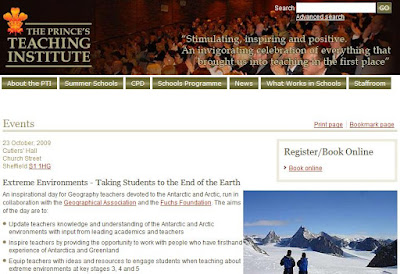
The GA web team: Anne Greaves and Ben Major, have been working away for months with designers Ledgard Jepson on a new website for the Geographical Association, and it is now live, after several weeks of beta testing and tweaking. Visit the GA URL http://www.geography.org.uk to see the new site.
The site looks a lot brighter, clearer and easier to navigate, and uses more of the screen’s width. Thanks to a major effort on tagging the resources, it is also easier to find things using the ‘Search’ function if they are not immediately obvious from the home page, and a new ‘Resource Finder’ should help you find something appropriate to the key stage and topic that you are interested in quickly, or items written by a particular author.
A one page user guide to the new site and how it’s laid out can be downloaded by following the link (PDF download): http://www.geography.org.uk/download/GA_NewWebsiteGuide.pdf
Members can also bookmark their most useful sections of the website on their own personal homepage. Logging in to the site will provide members with details about their account, and allow access to the journals which you subscribe to.
There are plenty of new items in the shop, which are displayed in a scrolling window, which will also suggest items that might be of relevance to you if you login.
News is easier to find, and has all been updated.
If you are not already a GA member, this is a good time to join and take advantage of the many membership benefits.
The website is also home to all the resources supporting the GA’s manifesto for school geography “a different view”.
Download the latest GA MAGAZINE from the site now
 Image by Alan Parkinson, and available under Creative Commons license
Image by Alan Parkinson, and available under Creative Commons license





